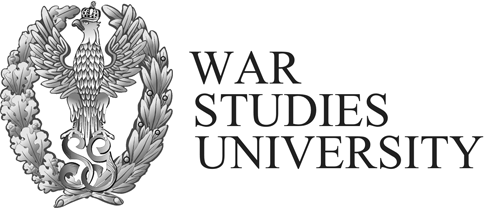Richard Overy is a British historian who specialises in the history of the Second World War. Over the course of his academic career, he has held teaching and research positions at the University of Exeter, the University of Cambridge, and King’s College London. In Why War?, the author expands his scope to explore the human propensity for conflict through interdisciplinary lenses, integrating biology, psychology, anthropology, and ecology, supporting his analysis with historical examples and aiming for a broad audience beyond specialists. The book’s main contribution to security and defence studies is the integration of natural and social sciences into a theoretical model that places the group as the main unit of analysis, combining biological predispositions with strategic and historically contingent choices, offering an alternative to structural explanations of war.
The book’s title refers to the 1933 correspondence between Einstein and Freud (1933), in which Freud argued that while the aggressive tendencies of humans cannot be fully eradicated, they can be mitigated through the cultivation of communal bonds and the establishment of a central authority capable of deciding and enforcing the settlement of disputes. Overy examines the explanation of warfare by scientists since then. He adopts a broad definition of warfare as ‘“collective, purposive, lethal, intergroup violence’” (Overy, 2024, p. 11). His central concern is explaining why groups organise and carry out violence, despite a general individual preference for peace. He is critical of theories that diminish the role of human agency, particularly structural approaches that explain war as a consequence of incentives shaped by the relative distribution of power within an anarchic international order (Waltz, 1979).
The book is divided into two parts, which offer complementary explanations for why war occurs. The first examines deterministic explanations, which attribute war to evolutionary, cultural, or ecological factors. These include biological and psychological predispositions, cultural norms, and environmental pressures. The second part explores motivational explanations, which emphasise conscious decisions made by groups in response to specific incentives, primarily resources, beliefs, power, and security. The author contends that both explanations contribute to understanding why humans engage in war.
Deterministic explanations argue that certain inherited traits predispose humans to violence. Overy draws on archaeological evidence to challenge the view that pre-state societies were predominantly peaceful and that war is a learned cultural practice. He shows that warfare is as old as our species (Gat, 2015). Collective violence increased the chances of survival and success of early human groups, since humans who engaged in violence were more effective in securing resources, protecting offspring, and gaining reproductive opportunities. This was reinforced by the psychological divide of the world between ‘us’ and ‘them,’ which helped to justify aggression against other human groups. As language and symbolic systems developed, warfare acquired new cultural and ideological meanings that varied across time and space. Moreover, ecological pressures, such as mass migration due to climatic changes, created incentives for intergroup violence when human competition for scarce resources intensified.
In contrast, motivational explanations emphasise agency, that is to say, conscious decision-making in response to specific incentives. The incentives for war fall into four main categories, which often intersect. First, access to resources, such as land, food, water, minerals, or trade routes, has historically been a central motive for war. Second, religious or ideological beliefs have motivated wars aimed at defending or imposing a belief system. Third, power struggles, often fueled by the ambitions of political leaders or ruling elites, have driven expansionist policies and wars of conquest, as seen in the Roman Empire’s expansion and in the cases of Alexander the Great, Napoleon, and Hitler. Lastly, security or ‘defensive’ motivations arise when groups perceive threats to their survival, autonomy, or territorial integrity: war in this case is undertaken as a preemptive or reactive measure to deter or eliminate perceived dangers.
After establishing his framework, which places the group as the central unit of analysis and combines both deterministic and motivational factors, Overy critically engages with Kenneth Waltz’s structural theory of war. Waltz’s theory shifts the level of analysis to the systemic pressures of an anarchic order, which creates incentives for self-help and generates a ‘security dilemma.’ In this framework, efforts by one actor to increase their own security can be perceived as threatening by others, prompting arms races and increasing the risk of conflict (Waltz, 1979). However, Overy challenges the sufficiency of structural explanations alone, arguing that to explain the occurrence of war, it is necessary to consider how systemic pressures are perceived and acted upon by organised groups whose responses are shaped by evolutionary and behavioural predispositions, symbolic systems, material constraints, beliefs, and strategic (historically and politically contingent) choices.
The author’s critique draws attention to a central tension among the dominant theories of war: the explanatory power of structural versus actor-centred approaches. While structural explanations focus on systemic conditions, such as the relative distribution of power in an anarchic international order, actor-centred explanations emphasise the role of states, groups, and individuals in interpreting these conditions and making conscious decisions to go to war. Overy aligns with the actor-centred tradition, insisting on the importance of using the group as the main unit of analysis, since warfare involves the mobilisation of groups for organised purposive violence. For example, the 2022 Russian invasion of Ukraine illustrates his argument that war arises not solely from systemic pressures, such as North Atlantic Treaty Organization (NATO) expansion, but from historically situated decisions by political actors, such as the Russian leadership’s use of narratives of imperial restoration and of Ukraine as a neo-Nazi threat to mobilise the necessary domestic support.
In summary, the author recognises that there is no single explanation for why humans pursue warfare. He rejects monocausal accounts and emphasises that understanding warfare requires a multidisciplinary and historically grounded perspective. By examining how scientific research has approached the problem of war since the Einstein–Freud exchange (1933), Overy shows that intergroup violence is not an aberration but a recurrent event in human history. Despite transformations in the modalities of war, such as cyber operations and the militarisation of space, the underlying causes of war, both deterministic and motivational, have remained the same since early human history. His conclusion is straightforward: war has been a part of all human history, and it is going to be a part of its future.




